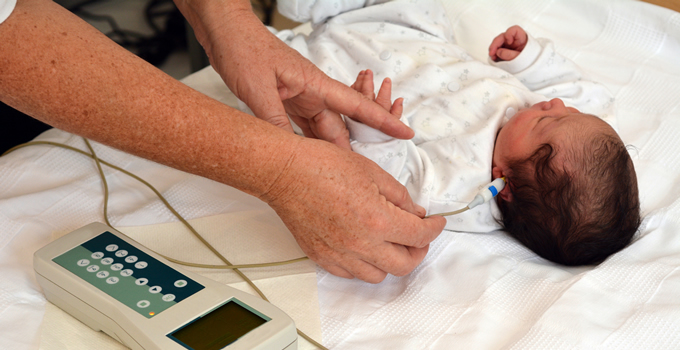
Two Types of Hearing Tests for Babies
All newborn babies should have their hearing tested prior to leaving the hospital. While parents probably have a lot on their minds during these first few days, it is vital that this time frame be followed. This is because the ability to learn a language, whether it is spoken or signed, has a critical period in which it has to be achieved or else it never can be. Thus, if problems do exist, they need to be addressed quickly.
There are two tests that are typically used by hospitals to test a newborn’s hearing. Neither of them take more than 15 minutes, and they are non-invasive. They can even be performed in the same room while the baby is asleep. Additionally, only 2 out of 1,000 newborns will be determined to have a hearing impairment.
Automated Auditory Brainstem Response (AABR)
This test is used for children who aren't old enough to communicate well enough for other types of tests as well as for infants. It typically takes around 10 minutes from start to finish. Before beginning, a few electrode stickers will be placed on the infant’s scalp. These will provide brainwave data similar to EEG technology. Then soft ear buds will be placed in the infant’s ear canal. A series of clicks will be administered through the ear buds. These clicks include an extensive range of frequencies in order to detect any issues across the entire spectrum. The electrodes will record the activity of the hearing nerves within the brain. Only approximately 4% of infants who undergo this screening will be referred for further testing.
Otoacoustic Emissions
The Otoacoustic Emissions screening test is designed primarily to test the function of the cochlea. In a healthy ear, the tiny hairs within the inner ear respond to hearing sound by vibrating and producing their own, smaller, sound. The Otoacoustic Emissions test involves the placement of a small ear phone type probe being inserted in the ear canal. Next, the probe will produce a sound and record the ear's response. If the response is within range, the hearing would be considered unimpaired. The otoacoustic emissions will miss a child with auditory neuropathy where the problem is from the nerve of the hearing and the inner ear hair cells are normal.
What If The Tests Aren't Normal?
If hearing issues are detected during either of these screenings, the first course of action will likely be more tests by various specialists. These will help determine the cause and extent of the impairment, as well as the appropriate treatment. Addressing the hearing loss early is critical in the development of the child’s language. Uncommonly, a cochlear implant is needed to help a child with severe hearing loss hear. A child who obtains a cochlear implant before age of 2 years (ideally at age 1 year) has a 90% chance of developing speech normally. This chance drops to less than 30% at age 4 years. Treating hearing loss early is the best way to prevent speech development delay.

